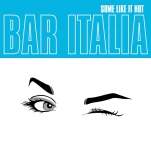5 Trends Signaling the Future of Snacks
Photos by Sarra SedghiThe American love for snacks both drives and reflects an industry of prepackaged foods, vessels that can satisfy a craving or a quick alternative for a meal that better fits a mobile lifestyle — at least half of the foods we consume are snacks, and as our pace increases that percentage promises to rise. These foods are the primacy source of income for convenience stores, which increasingly lean on snacks as the world’s oil supply diminishes.
-

-

-

-

-

-

-

-

-

-

-

-

-

-

-

-

-

-

-

-

-

-

-

-

-

-

-

-

-

-

-

-

-

-

-

-

-

-

-

-

 After much research, food science has determined that switching out key ingredients such as oils makes snacks and beverages marginally healthier without sacrificing taste (see below). Convenience stores are also pushing to make healthy snacks well, more convenient, widening the variety of produce and introducing low-card, high-protein options like “snacking cheese.”
After much research, food science has determined that switching out key ingredients such as oils makes snacks and beverages marginally healthier without sacrificing taste (see below). Convenience stores are also pushing to make healthy snacks well, more convenient, widening the variety of produce and introducing low-card, high-protein options like “snacking cheese.” Snack companies are directing their studies at millennials (yes, really) and have learned that young people care most about flavor. The Snyder’s booth, for example, boasted an array of adventurously flavored chips and crackers.
Snack companies are directing their studies at millennials (yes, really) and have learned that young people care most about flavor. The Snyder’s booth, for example, boasted an array of adventurously flavored chips and crackers.  Remember how you survived off the Shell freshman year because they bought your fake ID? The industry’s tapping into that with more craft beer options, an increase in wine and pre-made mixers (For example, Ocean Spray is finally producing cocktail bases). Convenience stores are also pushing to transform the beer run experience into something more interactive and autonomous with build-your-own six-packs and room-sized refrigerators, emulating a neighborhood bottle shop or at least a supermarket’s craft beer district.
Remember how you survived off the Shell freshman year because they bought your fake ID? The industry’s tapping into that with more craft beer options, an increase in wine and pre-made mixers (For example, Ocean Spray is finally producing cocktail bases). Convenience stores are also pushing to transform the beer run experience into something more interactive and autonomous with build-your-own six-packs and room-sized refrigerators, emulating a neighborhood bottle shop or at least a supermarket’s craft beer district. The consumer’s search for authenticity and flavor as well as the growing demographic of c-store customers welcomed snacks from around the globe. Hit international products like Topo Chico made appearances among the booths, and collaborations between American and foreign companies — Nabisco and Cadbury had developed an incredible candy bar, for example — are on the rise.
The consumer’s search for authenticity and flavor as well as the growing demographic of c-store customers welcomed snacks from around the globe. Hit international products like Topo Chico made appearances among the booths, and collaborations between American and foreign companies — Nabisco and Cadbury had developed an incredible candy bar, for example — are on the rise. Convenience stores depend on frazzled customers looking to satisfy a craving or fill a cup of coffee as quickly as possible. Supporting busier lifestyles (and enabling addictions), NACS participants pushed meal replacements, especially substitutes for breakfast. Energy shots and protein bars aimed at long-distance drivers dominated display tables, and one of the most successful convenience store ventures — coffee — comes in more vessels than ever before.
Convenience stores depend on frazzled customers looking to satisfy a craving or fill a cup of coffee as quickly as possible. Supporting busier lifestyles (and enabling addictions), NACS participants pushed meal replacements, especially substitutes for breakfast. Energy shots and protein bars aimed at long-distance drivers dominated display tables, and one of the most successful convenience store ventures — coffee — comes in more vessels than ever before.






































